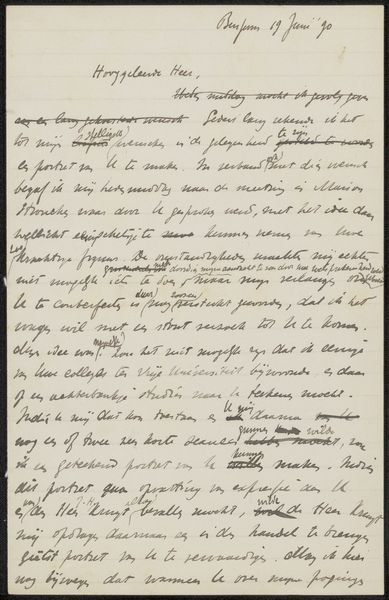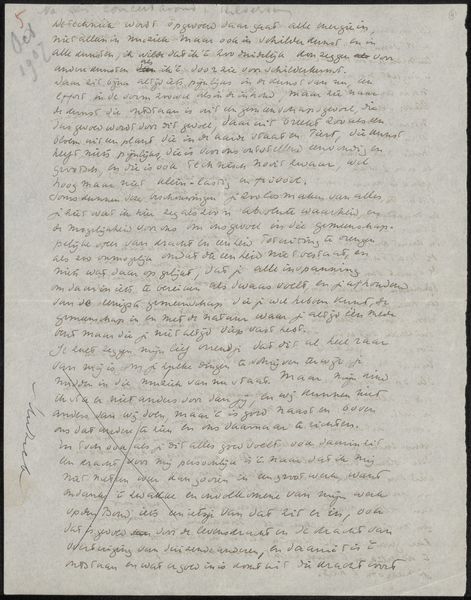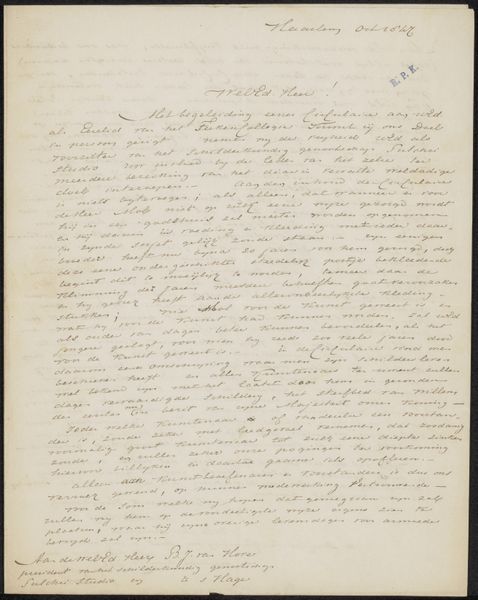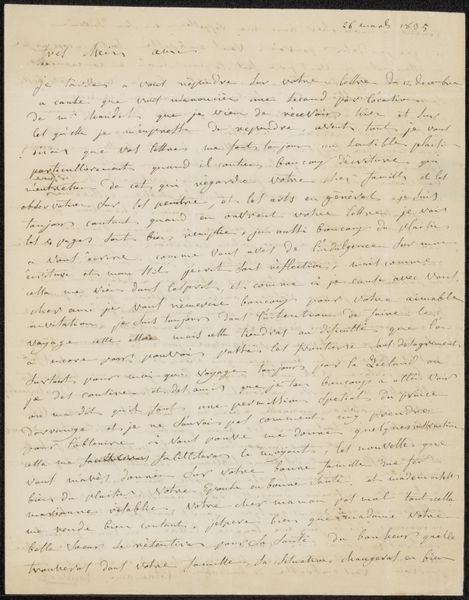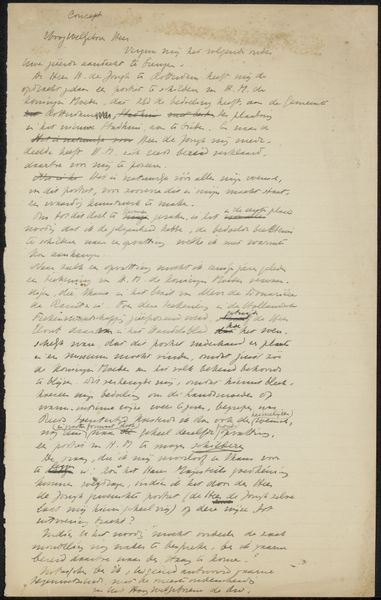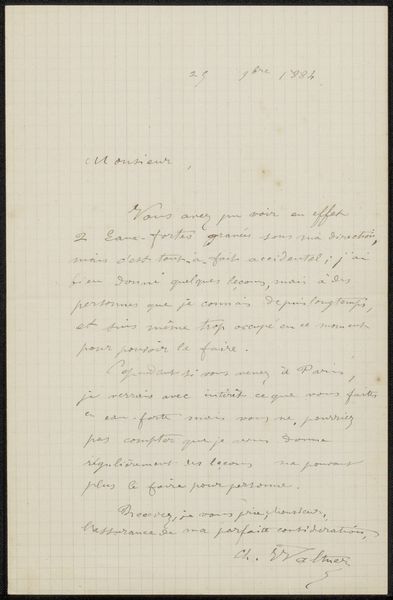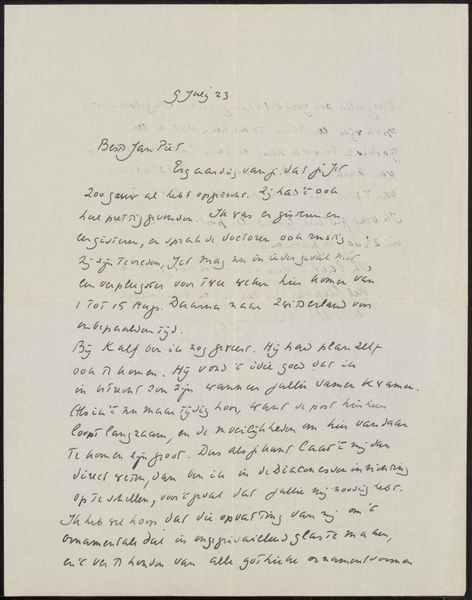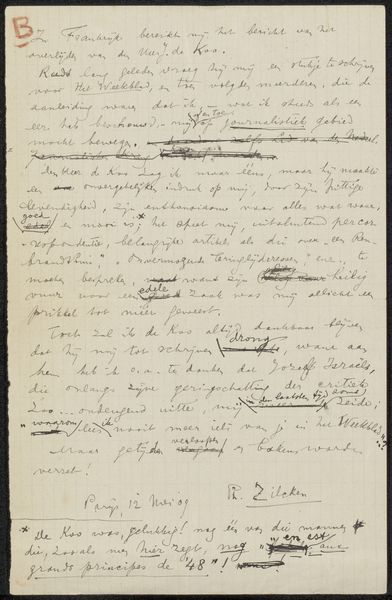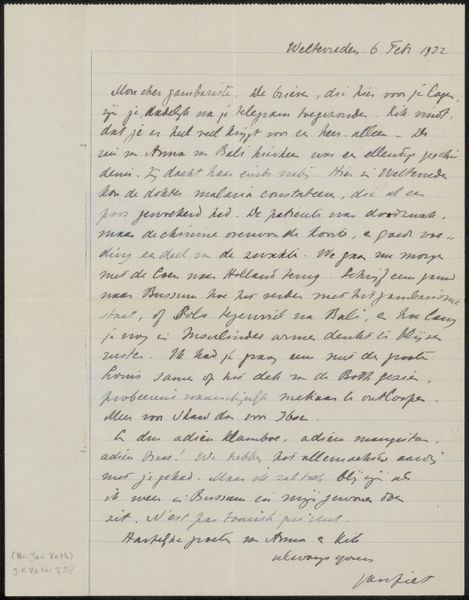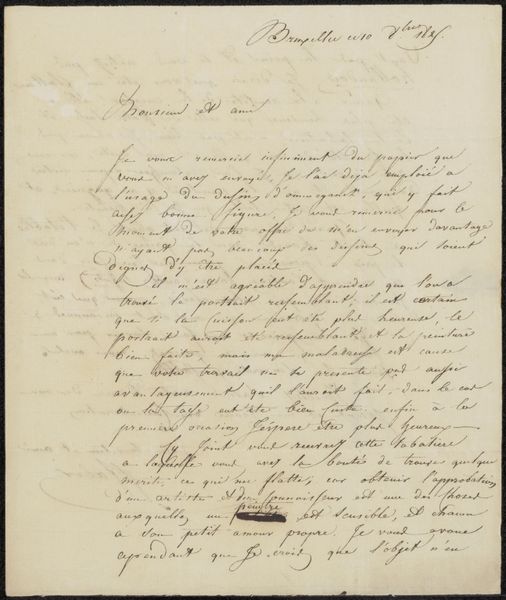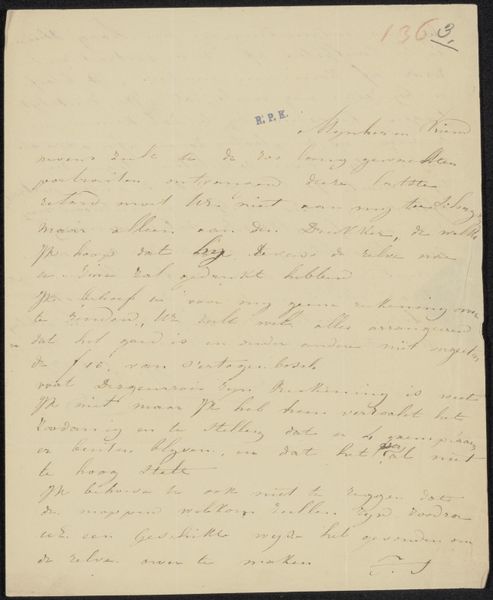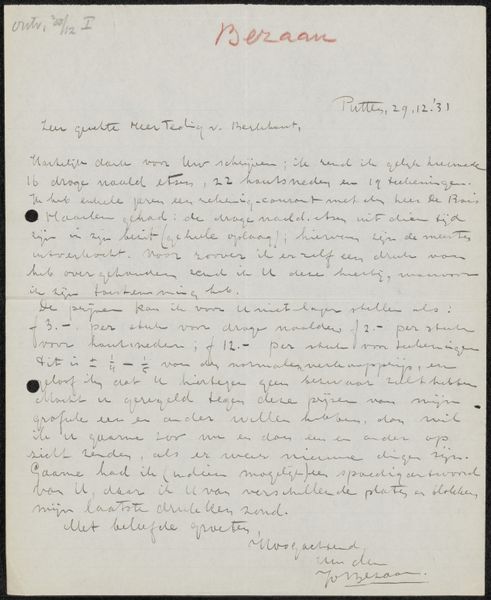
drawing, paper, ink, pen, frottage
#
drawing
#
ink paper printed
#
paper
#
ink
#
sketchbook drawing
#
pen
#
frottage
Copyright: Rijks Museum: Open Domain
Curator: Here in the Rijksmuseum, we're looking at a work entitled "Brief aan Paul Verlaine," or "Letter to Paul Verlaine," crafted between 1867 and 1896 by Philip Zilcken. It is made with pen and ink. What strikes you immediately about it? Editor: There's an undeniable intimacy to it. A handwritten letter—something almost vanished today. It feels personal, fragile even, like holding a secret. Curator: Indeed. Zilcken, though perhaps lesser known today, operated within a specific cultural milieu. Understanding that milieu – late 19th century, correspondence between artists, writers - reveals much about the piece's meaning. Editor: Yes, that milieu certainly shaped the context, but look at the flourishes, the handwriting itself! It seems very emotional. Are there any recurring motifs or symbols that you recognize? Curator: Given it's a letter, the most potent symbol, of course, is language itself. Consider Verlaine's poetry—the weight of words, ideas of romanticism, longing, alienation. That shared literary background shapes the letter's subtext. This work gives insight into queer relationships and artistic exchange. Editor: Absolutely, the lines appear almost frenetic. I wonder about the nature of their exchange. What were the artistic or emotional energies binding Zilcken and Verlaine? The penmanship conveys something more than mere information. Curator: Art history coupled with a queer reading gives context. In exploring gender and identity, it becomes a window into marginalized voices and a counter narrative to traditional historical accounts. This challenges us to question established narratives. Editor: Yes, and to read beneath the surface. Handwriting has a powerful presence in conveying identity; beyond its linguistic content, it’s another method to connect, to see and to be seen, both physically and psychologically, across distances. It almost transcends a time capsule here, representing the two sides of a unique and rare correspondence that will outlive its authors. Curator: Precisely. The act of writing and preserving carries weight in understanding personal history and its position within larger cultural contexts. It connects philosophy and interpersonal narratives and speaks to how people express ideas of shared experiences during specific cultural events. Editor: Ultimately, it is about bearing witness through symbols—a fascinating glimpse into the emotional landscape of a creative partnership, all held within this sheet.
Comments
No comments
Be the first to comment and join the conversation on the ultimate creative platform.
